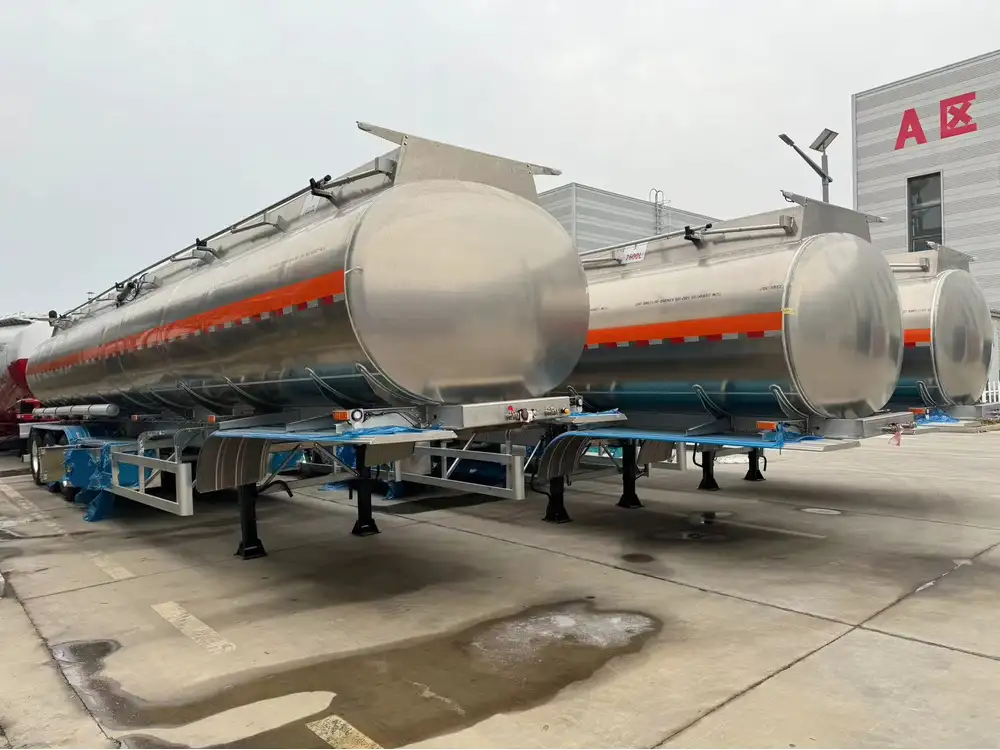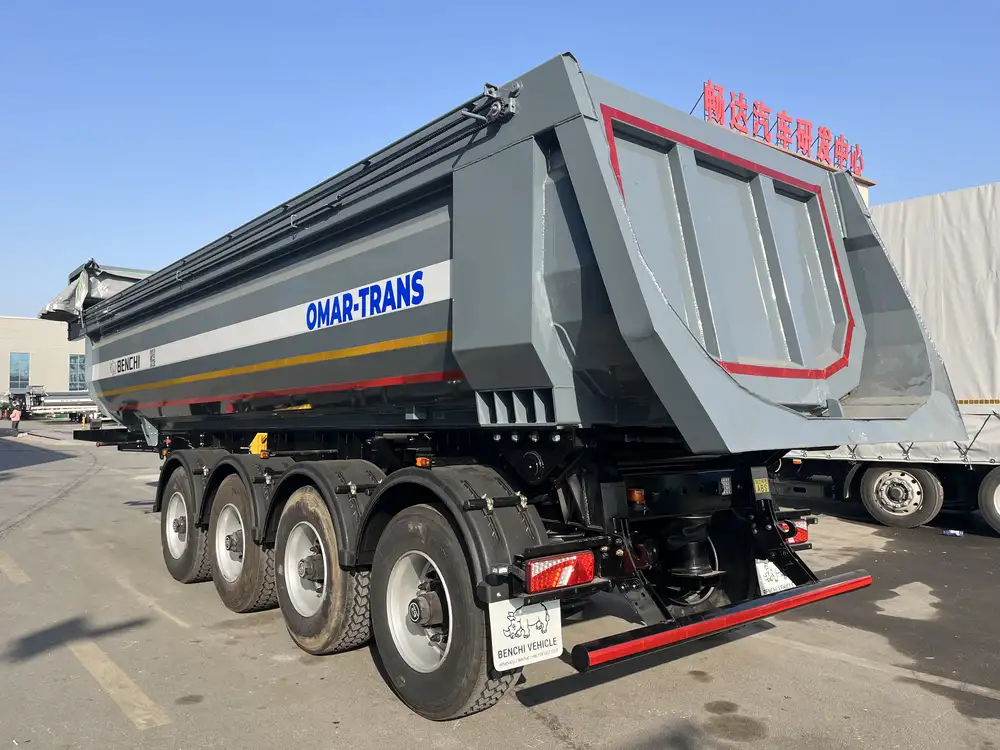When it comes to transportation and logistics in the fuel industry, understanding the capacities of gasoline tanker trucks is crucial for manufacturers, distributors, and logistics companies alike. These massive vehicles, engineered for the safe and efficient delivery of fuel, come with varying capacities that impact everything from supply chain logistics to pricing strategies. In this article, we will delve into the details of how many gallons a gasoline tanker truck can hold, factors influencing this capacity, and implications for transportation logistics.
The Basics of Gasoline Tanker Truck Capacities
The capacity of gasoline tanker trucks can vary significantly depending on build and design. Common configurations include:
| Tanker Type | Average Capacity (Gallons) | Common Uses |
|---|---|---|
| Small Tanker Truck | 2,500 – 5,000 | Urban deliveries, small stations |
| Medium Tanker Truck | 5,000 – 8,500 | Regional distributors |
| Large Tanker Truck | 8,500 – 11,000 | Long-distance transportation |
Typical Capacities of Gasoline Tanker Trucks
Small Tanker Trucks (2,500 – 5,000 gallons):
Often utilized for urban deliveries, these smaller tanker trucks are designed to navigate tight spaces and deliver fuel directly to gas stations and other facilities in busy areas. Their compact size allows for flexibility but limits the volume delivered in a single trip.Medium Tanker Trucks (5,000 – 8,500 gallons):
These vehicles strike a balance between capacity and maneuverability, making them suitable for regional fuel delivery. Ideal for mid-sized gas stations or storage facilities, they support higher volume demands without significantly compromising delivery efficiency.Large Tanker Trucks (8,500 – 11,000 gallons):
Employed primarily for long-distance transportation, these large trucks are equipped to carry substantial loads of gasoline, ensuring fewer trips and optimal logistics management across vast distances.

How Gasoline Tanker Truck Capacities Are Determined
The capacity of a gasoline tanker truck is influenced by several factors that intertwine engineering design, allowable weight restrictions, and operational needs:
1. Vehicle Design and Engineering
The design of a tanker truck dictates its volume capacity. Various designs include:
- Single Compartment Tankers: Ideal for transporting one type of fuel.
- Multi-Compartment Tankers: Allow for the transportation of different fuel types simultaneously, catering to diverse customer needs.
2. Regulatory Considerations
Government regulations set limits on weight and size for trucks. The maximum weight a tanker truck can carry (including the truck’s weight) typically hovers around 80,000 pounds in the U.S. This means the actual volume of gasoline transported must be calculated with weight regulations in mind.

3. Tank Material and Structure
Materials used in construction (commonly aluminum or steel) affect both weight and capacity. Aluminum tanks are lighter, allowing for greater payload capacities, whereas steel tanks are more durable but can weigh more.
Calculating Gallons in a Gasoline Tanker Truck
To illustrate, let’s take an example of how to convert measurements to understand capacity better. The tank dimensions can be used in this calculation:
- A standard tanker truck may measure approximately 42 feet in length and 8.5 feet in diameter.
- Volume Formula: The volume (gallons) can be calculated using the formula for the volume of a cylinder.
Where:
- ( r ) = radius of tank (4.25 feet in our case, half of 8.5 feet)
- ( h ) = height (length of the tank, 42 feet)
Example Calculation
Let’s break down the math:
Calculate the radius in feet: [ 4.25 \text{ ft} ]
Calculate the volume in cubic feet using π (approximately 3.14): [ V = 3.14 \times (4.25)² \times 42 \approx 3.14 \times 18.0625 \times 42 \approx 2244.45 \text{ cubic feet} ]
Convert cubic feet to gallons, knowing that 1 cubic foot equals approximately 7.48 gallons: [ 2244.45 \text{ cubic feet} \times 7.48 \text{ gallons/cubic foot} \approx 16,771.33 \text{ gallons} ]
However, due to structural and regulatory weight constraints, a truck of similar dimensions may realistically carry between 8,500 to 11,000 gallons, highlighting the complexity of actual gas capacities.

Implications for Logistics and Supply Chain Management
Understanding the storage capacity of gasoline tanker trucks is invaluable for several reasons:
Cost Efficiency:
Driving fewer, fuller trucks reduces transportation costs. Consequently, optimizing the number of trips not only cuts fuel expenses but also lessens environmental impact.Accuracy in Delivery Scheduling:
Knowing the capacity helps logistics managers schedule deliveries more accurately. It allows for forecasting demand and planning for peak delivery times.Flexibility in Operations:
Companies can tailor their fleets by integrating various truck sizes to meet diverse customer needs, whether urban or rural.
Challenges in Managing Gasoline Transportation
While gasoline tanker trucks play a critical role in fuel delivery, several challenges must be addressed:
Potential Risks of Fuel Transportation
Spillage and Leak Management:
Rigorous monitoring and maintenance are required to avoid environmental hazards from fuel leaks, which necessitates proper training for drivers and efficient incident response plans.Safety Regulations:
Compliance with local, national, and international safety guidelines can be complicated. This includes obtaining the right permits, training drivers on hazardous materials handling, and maintaining equipment in adherence to standards.

The Importance of Inventory Management
The fuel supply chain is subject to fluctuations in demand and market prices. This volatility necessitates sophisticated inventory management practices to ensure that supply meets demand without incurring excess inventory costs.
Future Trends in Gasoline Tanker Truck Design
As fuel transportation continues to evolve, so too will the tanker truck designs. Here are some anticipated trends:
1. Increased Focus on Safety Features
With the inherent risks associated with fuel transportation, expect innovations such as advanced containment systems, leak detection technology, and automated driving features that enhance safety.

2. Sustainable Fuel Solutions
The pivot towards green energy will affect gasoline tanker design too. Manufacturers may start introducing trucks to handle alternative fuels without compromising efficiency.
3. Enhanced Telemetry and IoT Integration
The integration of Internet of Things (IoT) technology will provide real-time monitoring capabilities, ensuring better route optimization, reduced waiting times, and improved asset management.
Conclusion: Understanding the Capacities of Gasoline Tanker Trucks
The capacity of gasoline tanker trucks is a critical concern for the fuel transport industry. With capacities typically ranging from 2,500 to over 11,000 gallons depending on the configuration, understanding these figures is essential for effective supply chain management. As the industry evolves, embracing new technologies and adapting to regulatory requirements will be crucial for optimizing logistics, enhancing safety measures, and responding to market needs efficiently. Ultimately, whether you are a manufacturer, distributor, or logistics operator, grasping the nuances of tanker truck capacities will empower you to make informed decisions that support operational success.
This comprehensive guide reinforces our position in the industry and serves as a central reference point for anyone looking to deepen their understanding of gasoline tanker truck capacities. Whether addressing logistical concerns or seeking specifics about capacity, the information provided here will be pivotal in making informed choices in the transportation of fuel.



